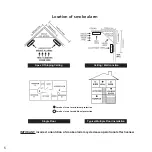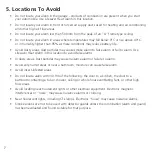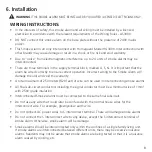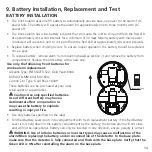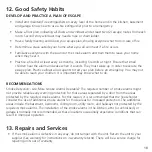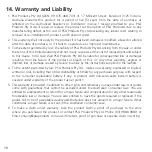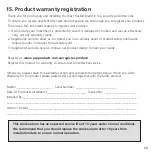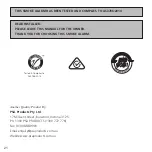
16
10. The Limitations of Smoke Alarms
Warning: please read carefully and thoroughly.
• Smoke alarms are devices that can provide early warning of possible developing fires at a
reasonable cost.
• Alarms have sensing limitations. Ionisation sensing alarm may detect invisible fire particles
(associated with fast flaming fires) sooner than Photo-electric alarms. Photo-electric sensing alarm
may detect visible fire particles (associated with slow flaming fires) sooner than Ionisation alarms.
• Home fires develop in different ways and are often unpredictable. Neither type of alarm (photo-
electric/ionisation) is always best and a given alarm may not always provide warning of a fire.
We strongly recommend that both ionisation and photoelectric smoke alarms be installed to help
insure maximum detection of the various types of fires that can occur within the home.
• Smoke alarms have certain limitations. For battery powered smoke alarms, the battery must be in
good condition and installed properly.
• AC powered alarms will not operate if AC power has been cut off, such as by an electrical fault,
open fuse or circuit-breaker, or fire. However, the battery back-up will activate the alarm if in
good working order.
• Smoke alarms must be tested regularly to ensure that the batteries and alarm circuit are in good
operating condition.
• Smoke alarms cannot provide an alarm if smoke does not reach the alarm. Therefore, smoke
alarm may not sense fires starting in chimneys, walls, on roofs, on the other side of a closed door,
or on a different floor.
• If the alarm is located outside the bedrooms, or on a different floor, it may not wake up a sound
sleeper. A smoke alarm in the bedroom, therefore, is recommended.
• Smoke alarms have been significant in saving lives in many parts of the world. Hence, the use of
this product does not substitute for basic prevention and total protection.
• Although smoke alarms can help save lives by providing early warnings of a fire, they are not a
substitute for an insurance policy.




